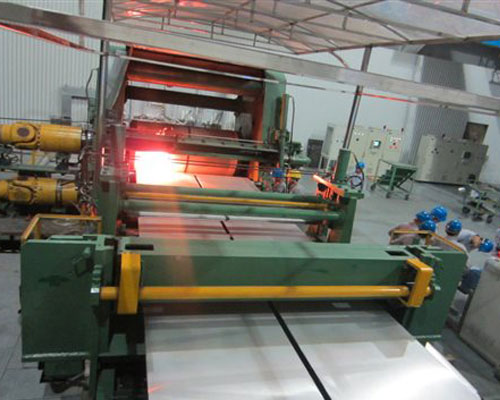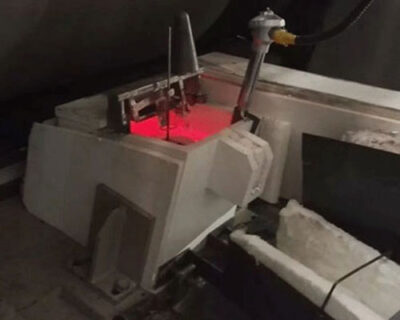Cast rolling zone is the key place of continuous casting rolling process. The length of casting rolling zone not only affects the process parameters, but also plays a decisive role in the quality of cast rolling plate. In the casting and rolling area, the casting and rolling processes are completed continuously in only a few seconds. When the length of casting and rolling zone is small, the casting speed becomes slow, the processing rate of cast rolling plate is small, and the adjustment range of other process parameters is also small. Increasing the length of casting and rolling zone can not only increase the casting rolling speed, but also increase the processing rate and improve the microstructure and properties of cast rolling plate. The adjustment range of other process parameters is large, so as to increase the labor productivity.
The aluminum water cooling is guaranteed by the heat storage of the roll sleeve of the casting roll. When the roll sleeve contacts with the aluminum water, the heat in the aluminum will be absorbed by the roll sleeve to cool and solidify the aluminum water. Then the temperature of the roll sleeve will rise, and the heat will be transferred from the roll sleeve to the circulating cooling water, and then taken away by the circulating cooling water. Therefore, the heat absorption capacity of the roll sleeve and the heat carried away by the cooling water have a great influence on the casting speed in unit time. The factors that affect the cooling strength of casting roll are: the heat absorption and thermal conductivity of roll sleeve, the material and thickness of roll sleeve, etc. The factors that affect the heat carried away by cooling water in unit time are the quality of cooling water, the temperature, pressure and flow rate of water at the inlet of cooling water for casting and rolling.

The temperature of flow control box is also called pouring temperature. In production, thermocouple is often used to measure liquid metal temperature in front box to control pouring temperature. The stability of temperature has a direct impact on the constant crystallization rate in the process of casting and rolling. Therefore, the fluctuation of front box temperature should be reduced as far as possible to ensure a stable liquid level height in the front box, so as to ensure the production of qualified cast rolling plate with longitudinal thickness difference.
The liquid level of the front box provides the flow rate and pressure for the liquid metal at the moment of crystallization in the casting and rolling area, so as to ensure the continuity of metal crystallization and obtain a dense structure, which is beneficial to the quality of cast rolling plate. If the liquid level is low, the static pressure will be reduced, and the flow rate will be insufficient, which can not meet the requirements of casting and rolling speed, and hot strip will appear easily. When the liquid level is high, the static pressure of liquid aluminum increases, and the crystallization speed can’t keep up with the rolling speed, resulting in more liquid extrusion from the gap between the ears, and the ears are washed out together, resulting in a large amount of liquid aluminum flowing out, resulting in production interruption. AdTech offers ladle shroud and float plate for controlling the liquid level.

